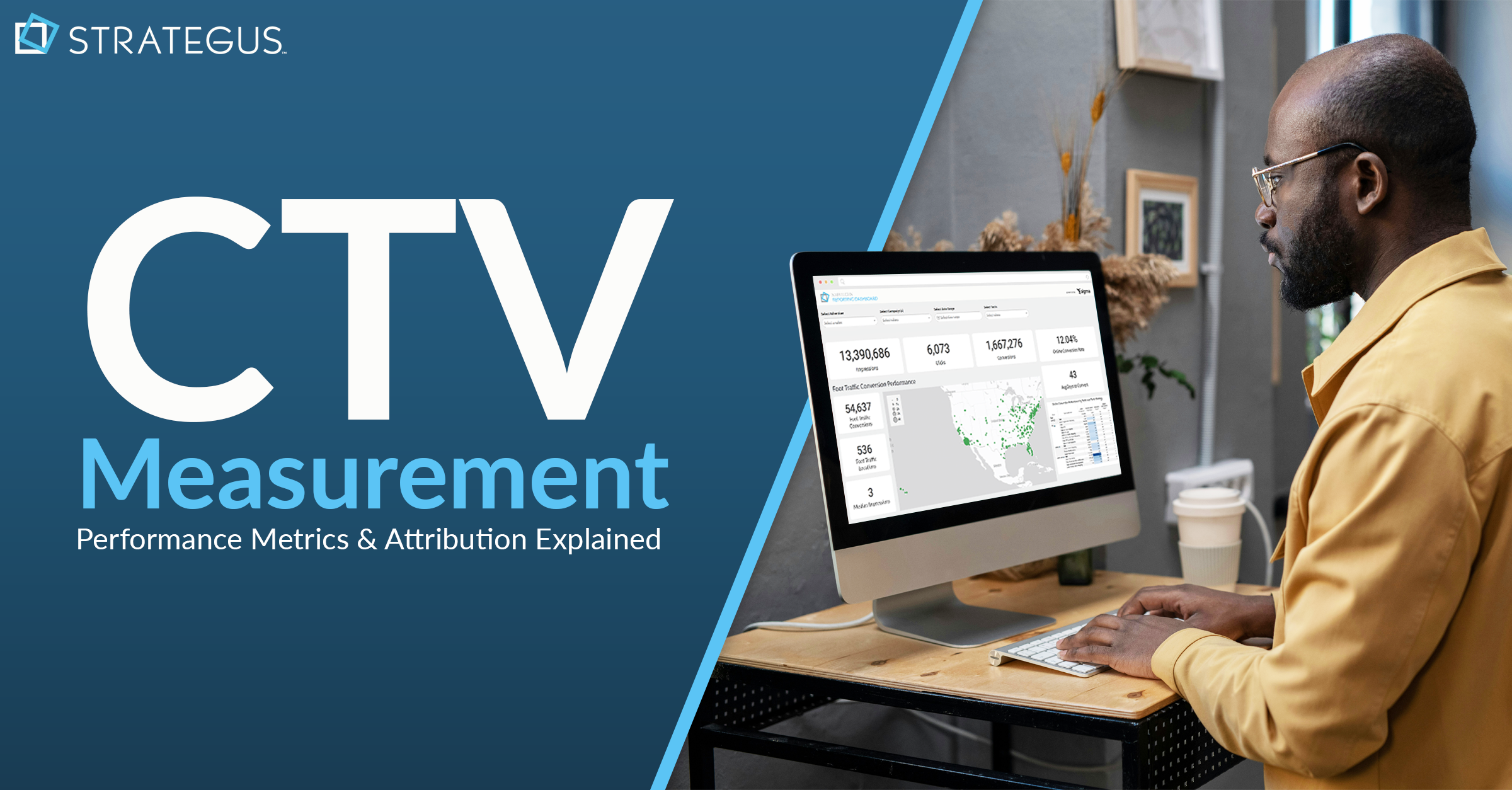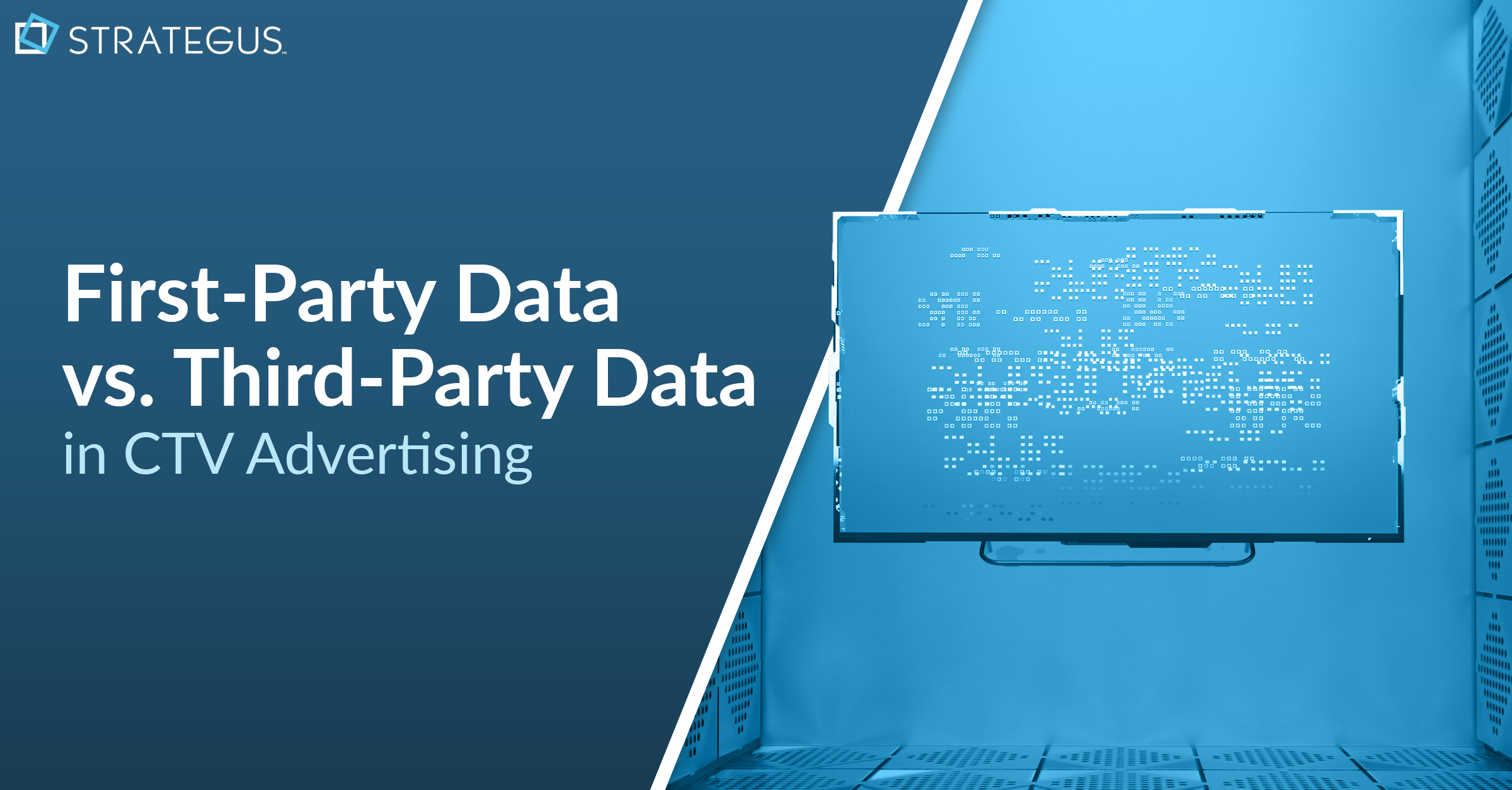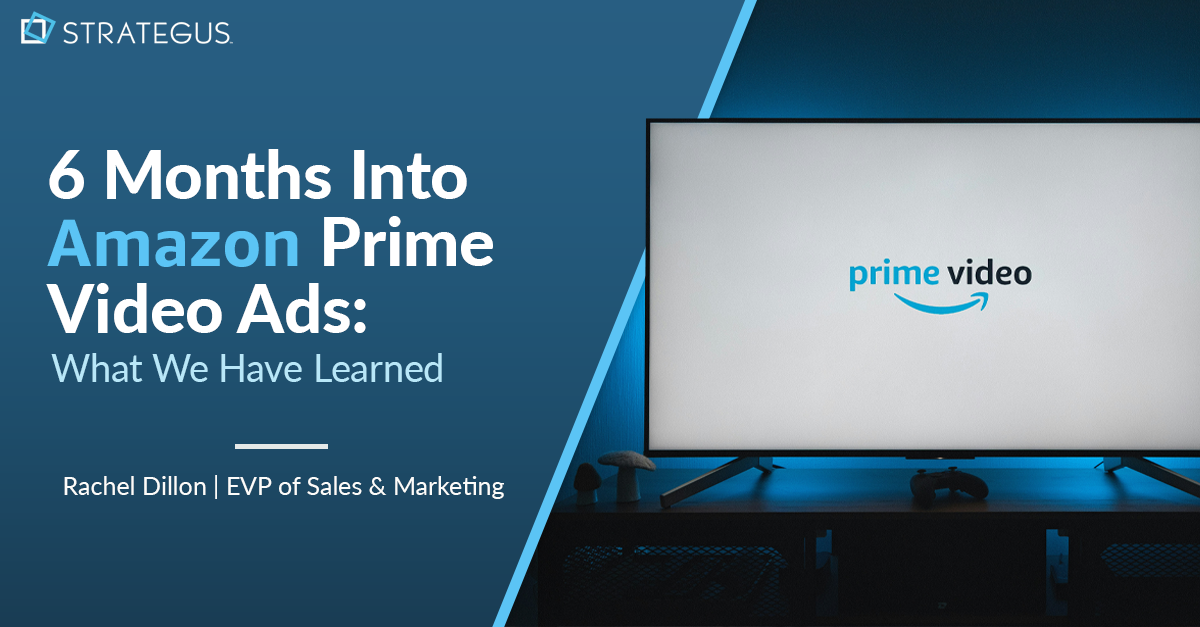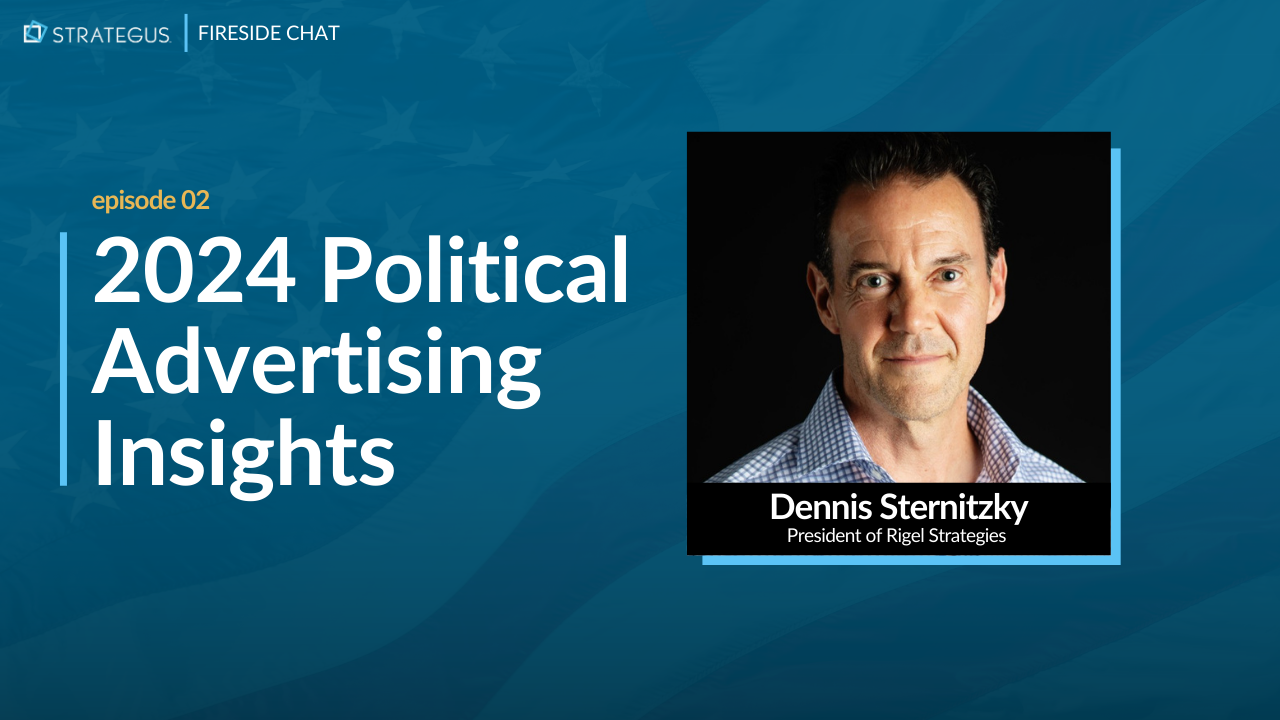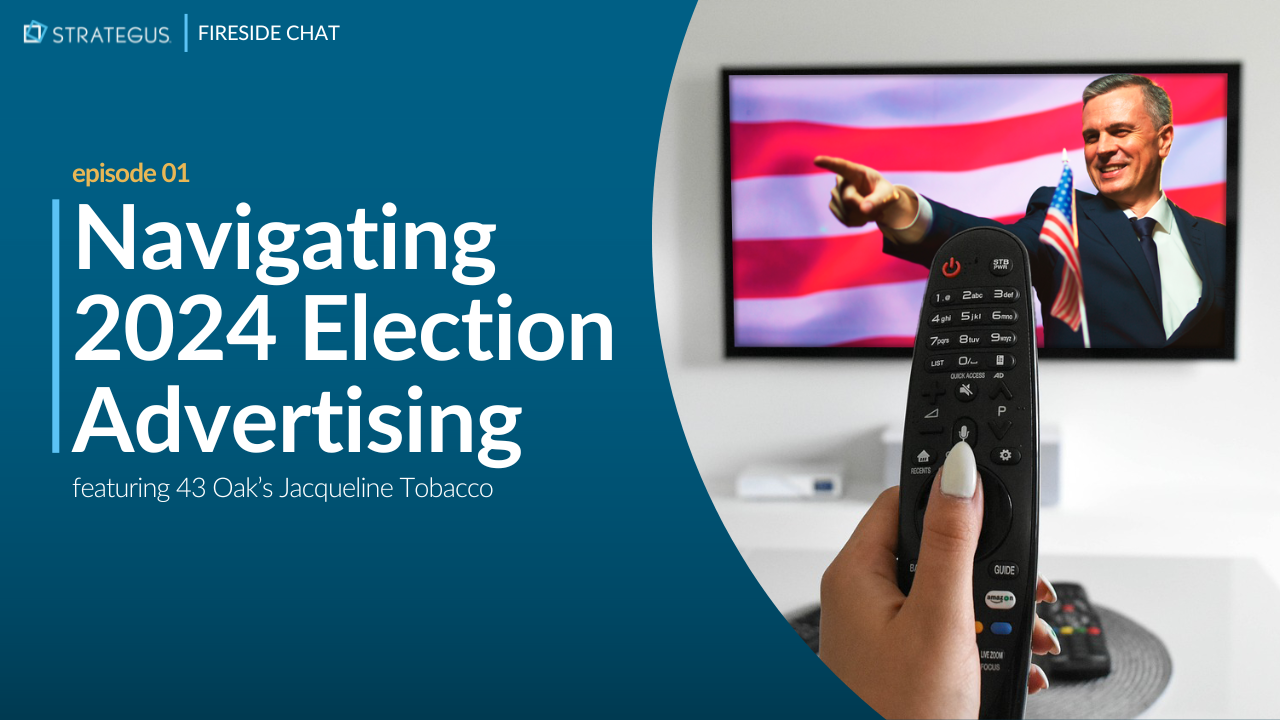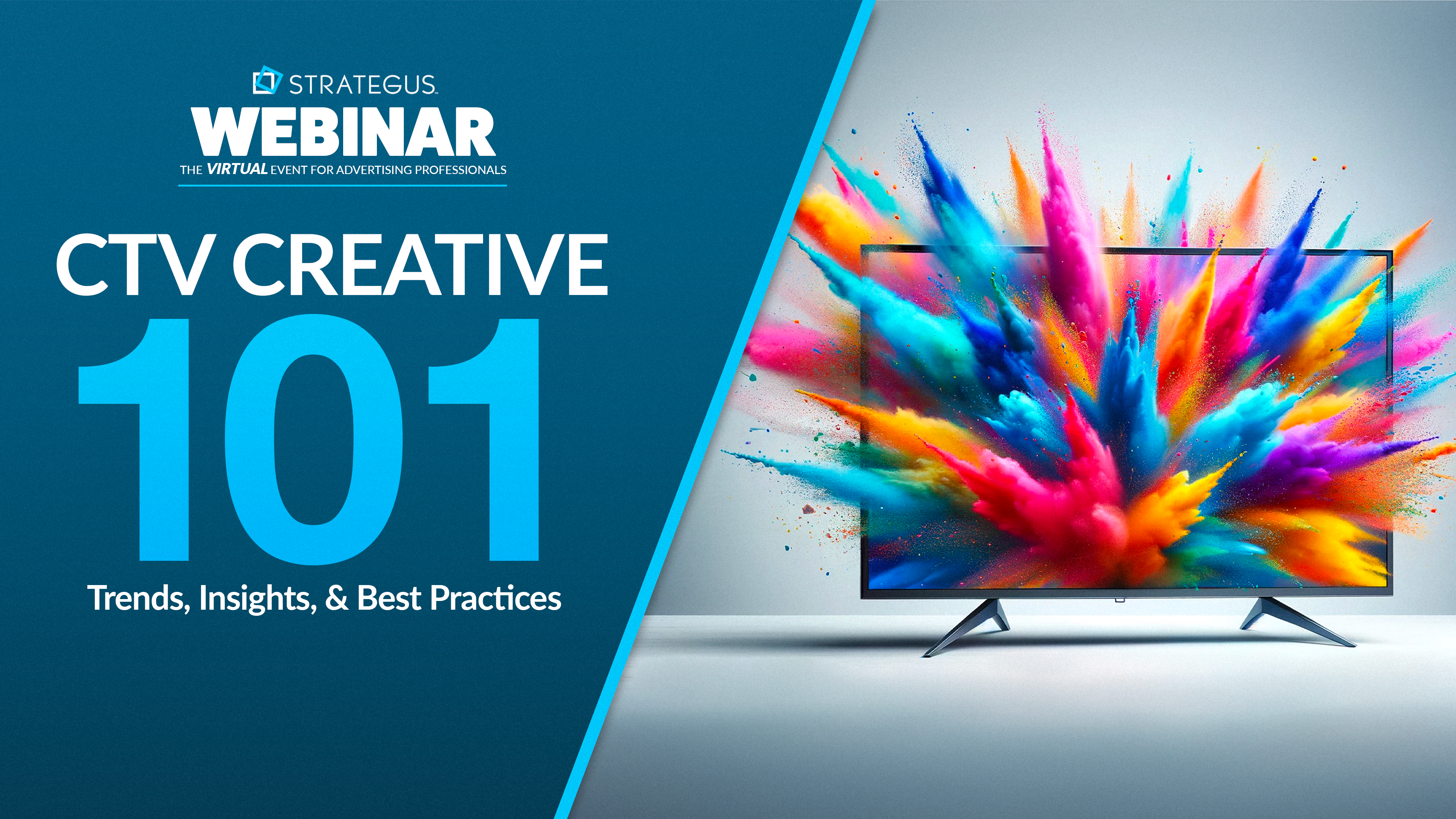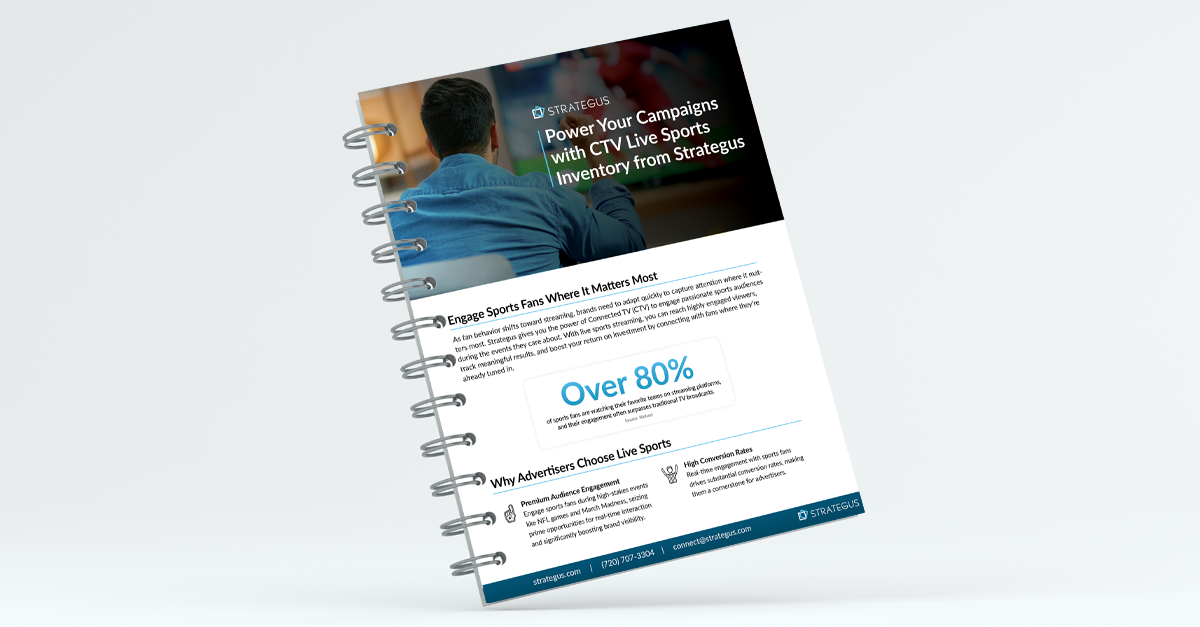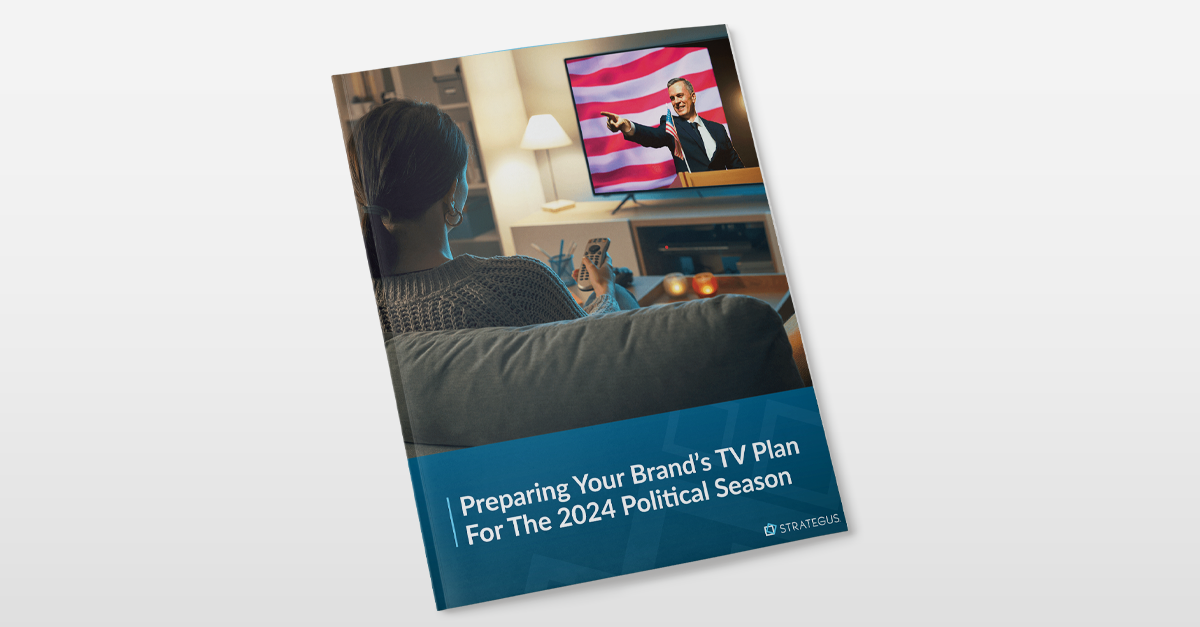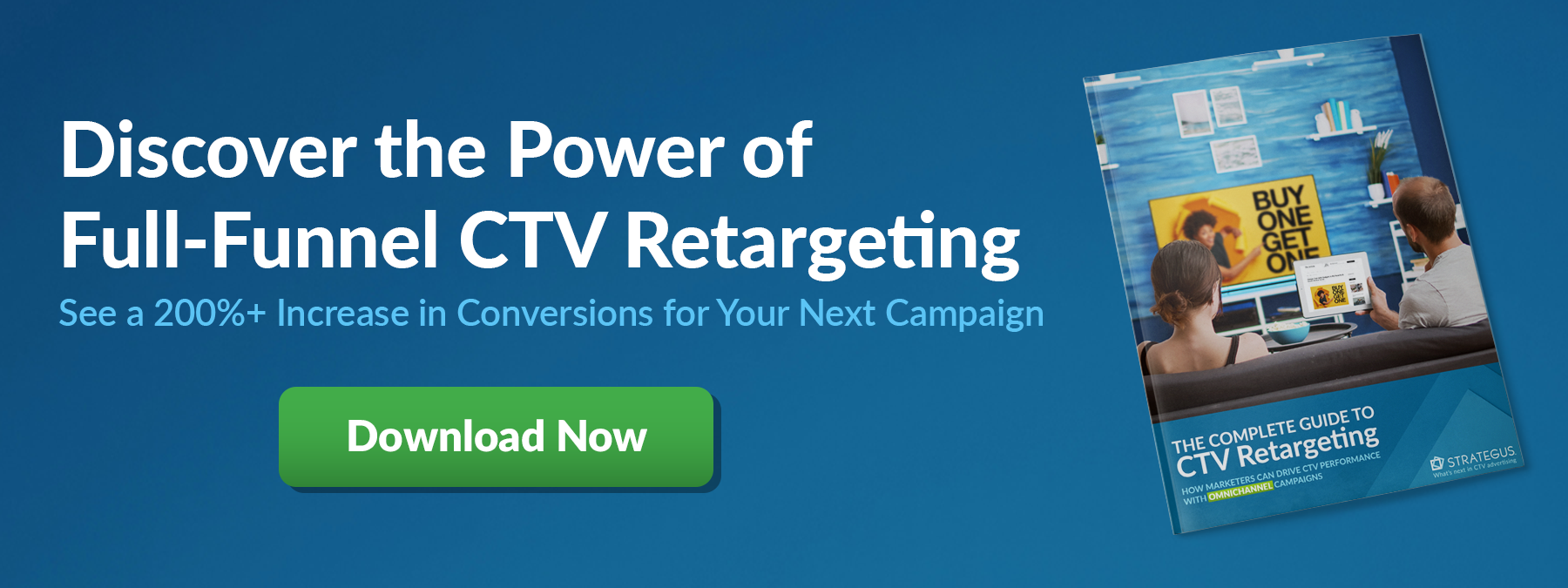- Home
- Strategus Blog
- Programmatic TV Advertising: What It Is and How It Works
Programmatic TV Advertising: What It Is and How It Works
 Traci Ruether
Traci Ruether
15 minutes read
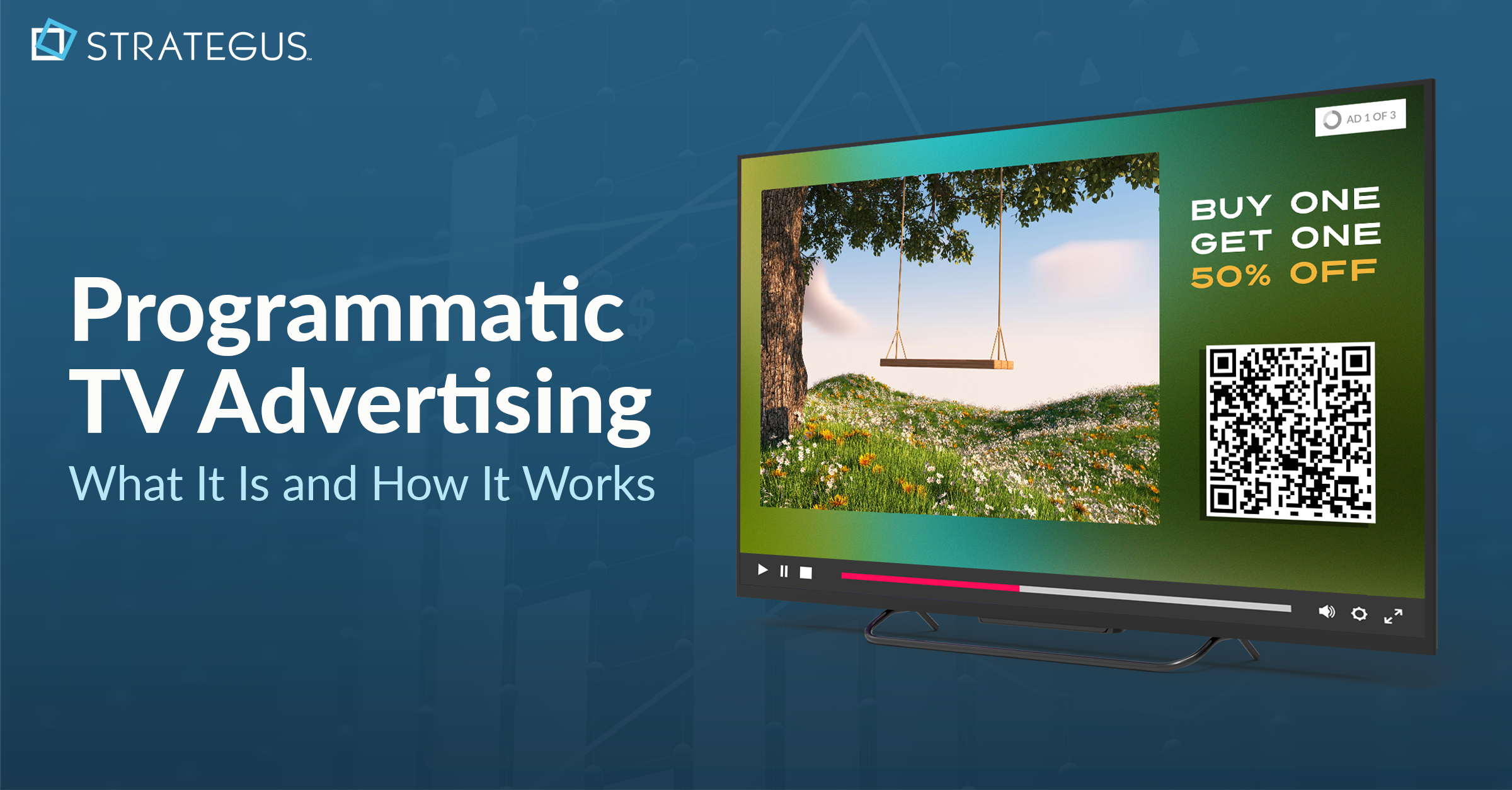
The shift from traditional television to streaming forever changed how media is consumed and distributed. An activity that once necessitated a fixed broadcast schedule and an expensive cable bill became more user-centric and flexible overnight. But that wasn’t the only thing that changed.
With the advent of internet-based television, TV advertising became more cost-effective and results-driven. That’s because marketers entered the brave new world of programmatic TV advertising.
Programmatic TV ads combine the big-screen impact of traditional TV spots with the data-driven possibilities of digital media. These ads target precise viewers with tailored campaigns, transforming the living room TV set into a performance channel.
In this article, we cover all things programmatic TV advertising, including what it is, how it works, considerations when choosing a programmatic TV partner, and best practices when crafting your connected TV (CTV) strategy.
What Is Programmatic TV?
Programmatic TV advertising involves the automated buying and selling of TV ad inventory across various platforms to deliver targeted ads to specific audience segments.
Whereas traditional TV advertising involves a manual process of negotiating deals with individual networks, programmatic TV advertising uses sophisticated algorithms and real-time bidding (RTB) to streamline the process.
This doesn’t just reduce the back-and-forth that goes into planning these campaigns, it also reduces ad waste and boosts performance. Why? Simple. Advertisers only pay for ads that reach their desired audience and can deliver much more relevant messaging by personalizing the messaging to each segment.
Traditional TV Advertising vs. Programmatic TV Advertising
Programmatic TV advertising sits at the intersection of linear TV and digital advertising, allowing marketers to reach engaged viewers in a targeted and measurable way.
To the undecerning eye, the two may look a lot alike: 15- to 30-second video ads play either before a show begins (pre-roll) or at a commercial break (mid-roll).

But for the advertiser, programmatic TV yields countless benefits.
-
-
It’s Targeted.Rather than having to pay to air a commercial to every Tom, Dick, and Harry watching the nightly news, media buyers are able to precisely target individual households using programmatic ad placement.
-
It’s Content-Agnostic.What’s more, advertisers transacting programmatically can efficiently execute campaigns across the entire CTV ecosystem, achieving the perfect balance of precision and scale.
-
It’s Performance-Driven.Due to their targeted and measurable nature, these ads often go beyond generic awareness plays by incorporating direct-response tactics that motivate viewers to take action.
-
Programmatic Linear TV vs. Programmatic CTV
Now let’s talk about the difference between programmatic linear TV and programmatic connected TV (CTV)
While linear TV has historically necessitated a spray-and-pray approach to advertising — where every viewer tuning into a given broadcast would be served the same generic (and often irrelevant) commercials — programmatic targeting is beginning to find its way into traditional broadcasting.
That said, the technology on legacy TV is nowhere near as sophisticated as that of programmatic CTV, which is why 75% of CTV ads are placed programmatically today.
|
Programmatic Linear TV Advertising |
Programmatic CTV Advertising |
|
|
Definition |
|
|
|
Targeting Capabilities |
|
Precise targeting based on interests, behaviors, search history, dietary preferences, the list goes on. Combines first- and third-party data for personalized ad experiences, allowing advertisers to build custom audience using a mix of tactics. |
|
Performance Measurement |
|
Real-time reporting that provides insight into metrics like viewer engagement, ad completion rates, and direct response actions. Additionally, attribution tools can be used to track user activity following exposure. |
|
Use Case |
|
Used for both brand awareness and more performance-based marketing campaigns due to CTV’s ability to be incorporated into full-funnel campaigns. |
|
Cost |
|
|
|
Example |
A direct-to-consumer skincare brand targets women aged 25-54 in urban areas with high disposable income, serving ads during prime-time beauty and lifestyle shows on cable networks like Bravo and E!. Viewers are then encouraged to visit the brand's website or call a specific phone number, and the campaign performance is tracked through website traffic increases and call center volume during and after the ad airings. |
A direct-to-consumer skincare brand targets women aged 25-40 who have recently searched for skincare products online, serving ads during popular streaming shows across a vast range of streaming platforms like Amazon Prime, Pluto TV, and Sling. Viewers are then served subsequent ads across display, search, and social through CTV retargeting tactics, and the campaign performance is tracked holistically at every step. |
How Does Programmatic CTV Advertising Work?
Programmatic CTV is entirely addressable, which means advertisers can specify the households that see their ads rather than having to pay to reach every viewer tuning into a given broadcast. This is achieved using an automated process of real-time bidding to identify specific households.

Here’s a breakdown of the process:
- Data collection: Data is collected from various sources, such as first-party CRM data, Amazon purchase data, and connected TV viewing data. These sources are combined to provide information about viewers’ demographics, interests, and viewing habits.
- Audience segmentation: Using this data, advertisers segment their audience into different groups based on their characteristics and interests. This allows them to create targeted ads that are more likely to resonate with each group.
- Ad delivery: Once the audience is segmented, the targeted ads are delivered to specific households through their CTV screens. These ads run during streaming content like on-demand shows on Amazon Prime, live sports broadcasts on YouTube TV, and must-watch TV shows on DirecTV Stream.
- Measurement and optimization: Advertisers can then track the performance of their ads and make adjustments based on the data collected. This paves the way for continuous optimization that can be done on the fly.

What Are the Benefits of Programmatic CTV
The benefits of programmatic CTV are tied to how its data-driven attributes give marketers the ability to link these campaigns to tangible business results. The IAB Digital Video Ad Spend & Strategy Report confirmed as much, revealing that business outcomes like store visits and website actions are now the most important KPIs for media buyers investing in CTV.
Chris Brugerle, the IAB’s VP of industry insights and content strategy, elaborates:
“We’re in a performance world now. We are in a ‘don’t waste your dollars’ market. And business outcomes are more important than they’ve ever been.”
Here’s a look at how programmatic CTV meets these needs.

Hypertargeted and Localized
Unlike the spray-and-pray approach of traditional TV advertising, streaming lets marketers pinpoint their audience in a fully customized manner. Trying to reach foodies? With CTV advertising, you can serve commercials specifically to gluten-free, vegetarian, or keto viewers within a specific geographic area.

Personalized and Relevant
Programmatic CTV allows brands to reach the right people, at the right time, with the right message by customizing the ad creative based on which customer segments are being targeted.

Full-Funnel Retargeting
CTV campaigns can be linked to cross-device retargeting strategies that drive conversions across supplementary channels. For instance, the same person who sees a CTV ad for a local health food store can be retargeted with a banner ad while browsing online.
Measurement and Attribution
The digital nature of online video provides marketers with access to a ton of data. For this reason, programmatic CTV ads help tie marketing dollars to quantifiable outcomes — such as how many people made online purchases, visited a brick-and-mortar location, or researched the advertised products following ad exposure.
Cost-Effective
Old-school TV advertising was only feasible for big businesses with even bigger budgets. That’s not the case with programmatic CTV. Because these ads are purchased on a per-viewer basis, marketers only have to pay for actual views using cost-per-mile (CPM) rates. This has helped democratize the medium, making it a feasible channel for small local businesses.

Ongoing Optimization
Programmatic CTV is dynamic and can be changed on a dime. While a “set it and forget it” mentality leads to missed opportunities, taking a more proactive approach can help brands nail down a formula for success through iteration. Obviously, this requires time and resources that not all marketers have. But there’s always the option to enlist the help of a managed services partner like Strategus to take care of the day-to-day details of maximizing CTV success.
Programmatic TV Advertising Best Practices
While automated ad delivery helps speed up the manual processes of media placement, advertisers still need to approach programmatic CTV strategically.
We’d recommend prioritizing the following best practices when getting started.
- Define campaign goals and target audiences: The first step to crafting a CTV campaign is defining your goals (e.g., brand awareness, website visits, foot traffic to a brick-and-mortar location) and target audience segments. This will lay a foundation for more targeted and actionable campaigns.
- Gather existing video assets: Next, assess your existing video library. Look for high-quality, on-brand content that aligns with CTV's technical requirements. This includes professional production value, clear branding throughout, a singular focus on a key message, and clean design with easy-to-read text and contrasting colors for optimal viewing on large screens.
- Update what you have or build CTV-first creative: Whether you’re updating existing video assets or creating new ads from scratch, it’s all about giving users a clear call to action based on your campaign goals. Some tactics for doing this include promoting current deals, showcasing your current inventory with dynamic creative, or incorporating interactive elements like QR codes that drive action.
- Personalize messaging to different audiences: The key to CTV advertising is delivering relevant ads that resonate with viewers. As such, tailoring ad creative to different buyers drives better results. This could mean swapping out the B-roll or highlighting different products and services.
- Nail the basic requirements and specs: Align with technical specs for the length (15 or 30 seconds), file format (MP4), and resolution (1080 p). Failure to meet these specs can cause latency and buffering, potentially causing viewers to abandon the app or even reboot their devices.
- Put guardrails in place to prevent ad fatigue: Rotate at least 3 creative variations can help prevent ad fatigue, as well as refreshing your ads quarterly. You’ll also want to monitor campaign frequency and engagement to adjust your strategy based on what the data shows.
- Integrate your CTV ads into full-funnel campaigns: Expand your reach and boost conversions by layering retargeting efforts across various channels like display ads, paid social media ads, and paid search ads. This allows you to deliver targeted messages throughout the customer journey, from initial brand awareness to website visits and ultimately, conversions.
- Test and optimize campaigns in flight: Just like other digital channels, programmatic CTV campaigns should be monitored and optimized on an ongoing basis.

How to Choose a Programmatic CTV Partner
You have two choices when approaching CTV: partnering with a managed service CTV provider like Strategus or finding a self-serve demand-side platform (DSP).
If you go with the self-serve model, the onus will be on you to control the process. That often means overseeing all of the media purchases, juggling multiple dashboards, and piecing together an ecosystem of vendors.
This is an OK approach if you’re fully resourced and have extensive CTV knowledge on staff. But if not, we’d recommend finding a trusted partner to take care of the details.
Our Co-Founder and EVP of Innovation, Joel Fox, explains:
Here’s how the two compare:

Maximizing Scale With Cross-Platform Inventory
Another consideration when evaluating CTV providers is the breadth of their inventory. As long as you’re tied to a single programmatic platform, your ability to reach viewers across different platforms and channels will be limited.
Similarly, closed ecosystems like Amazon and Google may be an attractive option for someone just getting into CTV advertising, but you should be wary of platforms that these walled gardens due to the risk of vendor lock-in, lacking transparency, and a lack of diversification.
When evaluating CTV vendors, we’d recommend asking questions like:
- Who are some of the data and tech partners you work with?
- Can you provide a list of inventory sources?
- How are you different from other CTV advertising providers?
- What attribution solutions do you offer?
- How do you target audiences beyond the traditional age and gender demographics?
Get Started With Strategus
Programmatic technology is changing the way TV ads are served. But getting the most out of this dynamic channel requires deep expertise and integrations across the CTV ecosystem.
At Strategus, we’re committed to maximizing the content-agnostic power of programmatic media buying. Our vast library of premium inventory spans 200+ publishers that dominate the media landscape and more than 843 individual deal IDs.
As the first organization to run a programmatic CTV campaign in 2015, we continue to drive results for the agencies and brands that work with us.
Here's a look at what sets us apart:
- Unmatched expertise. We’re laser-focused on CTV advertising, advising you on the latest strategies and best practices.
- Tailored approach. We take the time to understand your unique goals and target audience, and craft personalized campaigns that resonate and drive results.
- Seamless execution. Our team handles the heavy lifting, freeing you to focus on more strategic initiatives.
- Measurable results. We provide transparent reporting and ongoing optimization, ensuring you get the most out of your advertising spend.
Are you ready to give programmatic CTV a spin or revamp your current approach? Contact us to get started today.

Traci Ruether is a content marketing consultant specializing in video tech. With over a decade of experience leading content strategy, she takes a metrics-driven approach to storytelling that drives traffic to her clients' websites. Follow her on LinkedIn at linkedin.com/in/traci-ruether or learn more at traci-writes.com.
Strategus is a managed services connected TV(CTV) advertising agency with over 60,000+ campaigns delivered. Find out how our experts can extend your team and drive the result that matter most.
Talk to an Expert
Table of Contents
Seeking a Custom CTV Strategy That Delivers?
What to read next

CTV Measurement: Performance Metrics & Attribution Explained
One of the biggest differences between traditional TV advertising and delivering ads to connected TV (CTV) devices is that the latter can be measured...
10 minutes read
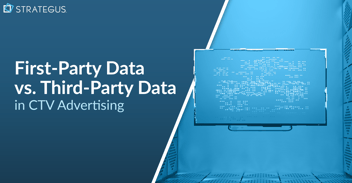
First-Party Data vs. Third-Party Data in CTV Advertising
Ad tech runs on data. But not all data is collected and shared in the same way. Cue in first-party vs. second-party vs. third-party data. Any...
62 minutes read

6 Months Into Amazon Prime Video Ads: What We Have Learned
“Streaming TV advertising is growing quickly and off to a strong start.” That wasAmazon CEO Andy Jassy’s observation in April, three months after...
5 minutes read

CTV Platforms: A Guide to the Top Connected TV Providers
The term connected TV (CTV) platform means different things to different people.
16 minutes read



